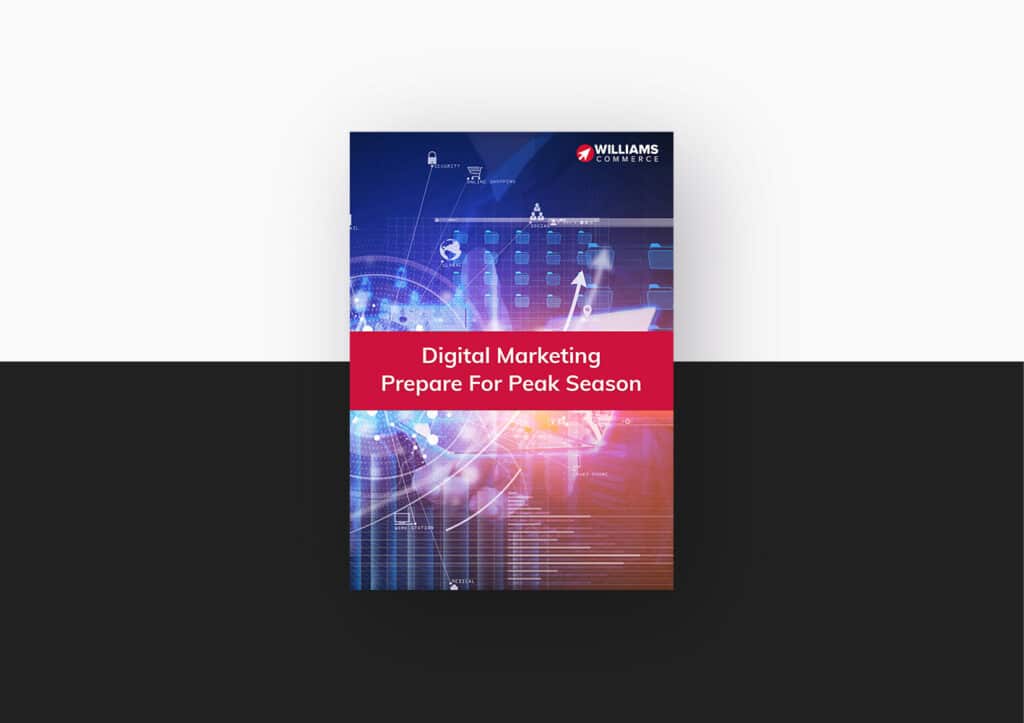Delivering consistent visual branding and messaging across all your customer touchpoints through a comprehensive omnichannel strategy is the route to success when you have put brand building at the heart of your marketing strategy for 2022.
New technology and growing markets are attracting more online sellers than ever before while many traditional companies were driven online during the pandemic out of necessity. In an increasingly crowded space, it’s becoming much harder to find new customers, driving up the cost of acquisition. A strategic approach to customer retention and lifetime value is now a high priority for the future success of many businesses.
Competition is the biggest obstacle to growth in 2022 according to 350 commerce decision makers around the world surveyed in Shopify’s ‘The Future of Commerce’ report. Data privacy regulations limit targeting and users have developed new digital skills to block advertising content. The cost per click for paid search results increased by 15% between the second and third quarter of 2021, creating new challenges for marketers.
In this environment companies that rely on short-term performance marketing are likely to fall behind. In contrast, a strong brand will improve short term results and provide strong foundations for sustainable business growth with more organic acquisition, customer retention and flexible pricing options.
Establishing your brand’s value
Demand for measurable results remains high, so you will want effective methods to correlate your brand building activities with sales performance. However, sales metrics alone won’t be enough to inform your decisions. You will want reliable brand measurements for awareness and brand consideration, for example, complemented by direct feedback from your target audience. Your social media channels will also provide dynamic data about keywords and online buying intent. Above all, you must be prepared to trade investment in short-term sales gains for your longer-term brand goals.

Explore new channels
Voice shopping, connected TV, and messaging apps offer alternatives to paid online advertising. Email and text also continue to be powerful and cost-effective ways to build customer relationships. Many organizations are also embracing physical locations as part of their omnichannel strategy to combine online and offline experiences.
While marketplaces allow direct to consumer (D2C) businesses to reach new audiences, more than four out of 10 companies are concerned about tough price competition and loss of control over customer experiences. Many choose to offer a small number of popular products to reach new customers and then provide incentives for them to buy from their brand site with exclusive offers.
Be unique
Your customers, and especially digital natives, want to engage with brands that mirror their own values. You can build long-term loyalty by sharing your brand story across all your channels to highlight how you are different from your competitors.
For example, the outdoor brand, Patagonia, actively campaigns for environmental causes. Its ‘Worn Wear’ program encourages people to buy and sell used items and its ‘Drive-Less’ scheme rewards employees for reducing emissions when they travel to work.
Employees have an important role as brand ambassadors and deliver customer experiences, so they must be aware of your brand values and actively demonstrate them.
Deliver genuinely personalized experiences

Although customers are concerned about data privacy they continue to expect personalized shopping experiences, although this won’t be enough to create long-term brand loyalty. Brand communities are now becoming the key to building trust, creating brand equity, and improving customer retention.
While data protection regulations constrain data tracking and third-party cookies become a thing of the past, businesses must learn to innovate with first-party data to deliver engaging omnichannel customer experiences. To encourage data sharing, four out of 10 businesses are already planning to be more transparent about how they use customer information to deliver relevant content and offers.
Build your brand community
Brand leaders are now investing more in customer loyalty and connection as part of their customer acquisition and retention strategy. At the same time, brand communities also decrease customer support costs and can be especially important for D2C businesses.
Building a community of brand ambassadors will demand a coherent omnichannel strategy using traditional social channels and newer options such as chat rooms and real-life experiences. While you want to connect with customers, you can also be a facilitator, helping members of the community to create lasting connections with each other.
Omnichannel sales
When you have established a thriving brand community across multiple channels you will also have new sales opportunities.
Sales through social media channels around the world are expected to triple by 2025. China is already a world leader in social selling with almost half of the country’s internet users shopping on social networks. In Southeast Asia, social media is the top channel for discovery and accounts for 20% of online spending.
Video channels including Instagram, YouTube and TikTok are offering new digital sales opportunities for businesses. Social commerce can help to build brand equity and engagement as an alternative to product-based online marketplaces.
However, although China has a well-established taste for combining shopping and entertainment, which underpins the popularity of livestream commerce, it is likely to take longer and be more fragmented in the rest of the world. Whether you consider using an established platform or you are planning your own shopping channel you should be prepared to experiment to find out what works for your customers. Most importantly, you won’t want to jeopardize the trust you have built across your brand community.
Live chat will be an important channel for 2022, with more than 40% of customers saying they expect live chat on your website. Video is also becoming influential as a new generation of customers look for engaging content as part of their buying journey. Almost half want to watch product videos before they buy.
Benefit from our experience
At Williams Commerce we have always focussed on delivering transformational digital outcomes for our customers. We can help you achieve outstanding customer experiences with our deep technical capability.
Our success in helping businesses achieve their online goals has made us the ecommerce partner of choice for many leading businesses and brands.
Speak with one of our experts to create an omnichannel future for your business.




